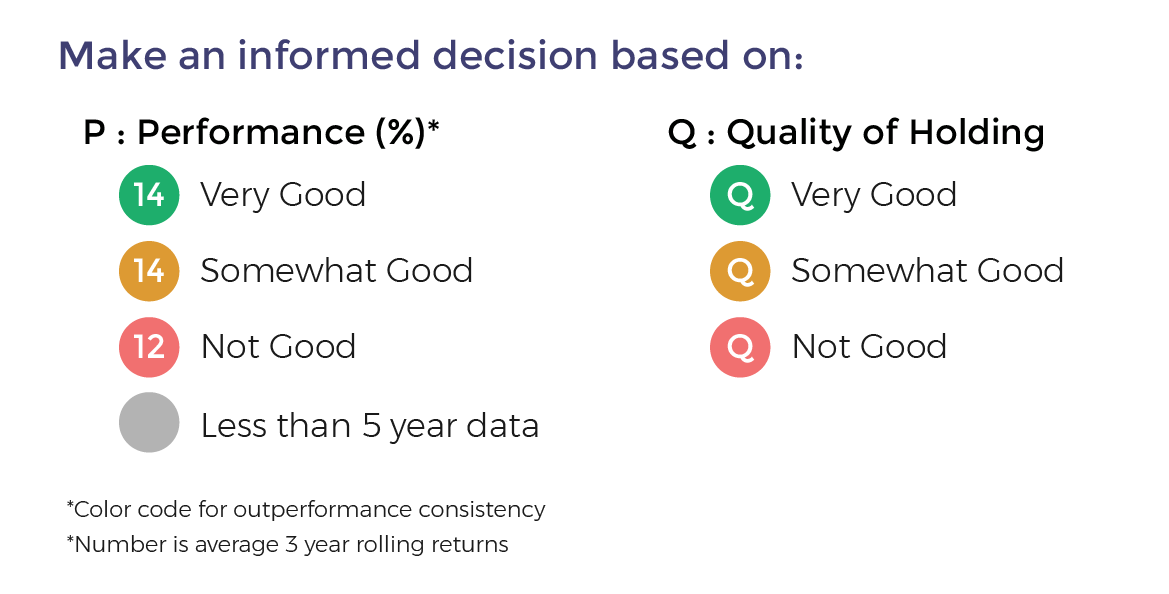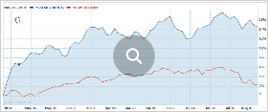Home First Finance Company India
Home First Finance Company India is coming out with a 100% book building; initial public offering (IPO) of Rs 2 each in a price band Rs 517-518 per equity share.
Not more than 50% of the issue will be allocated to Qualified Institutional Buyers (QIBs), including 5% to the mutual funds. Further, not less than 15% of the issue will be available for the non-institutional bidders and the remaining 35% for the retail investors.
The issue will open for subscription on January 21, 2021 and will close on January 25, 2021.
The shares will be listed on BSE as well as NSE.
The face value of the share is Rs 2 and is priced 258.50 times of its face value on the lower side and 259 times on the higher side.
Book running lead managers to the issue are Axis Capita, Credit Suisse Securities (India), ICICI Securities and Kotak Mahindra Capital Company.
Compliance Officer for the issue is Shreyans Bachhawat.
Profile of the company
The company was incorporated as ‘Home First Finance Company India Private Limited’ at Bengaluru, Karnataka as a private limited company under the Companies Act, 1956, pursuant to the certificate of incorporation dated February 3, 2010 issued by the Registrar of Companies, Karnataka at Bengaluru. Subsequently, the company was converted to a public limited company and consequently the name of the company was changed to ‘Home First Finance Company India Limited’ and a fresh certificate of incorporation dated March 14, 2018 was issued by the Registrar of Companies, Maharashtra at Mumbai (RoC). The company is a technology driven affordable housing finance company that targets first time home buyers in low and middle-income groups. It primarily offers customers housing loans for the purchase or construction of homes, which comprised 92.1% of its Gross Loan Assets, as of September 30, 2020. Its Gross Loan Assets have grown at a CAGR of 63.4% between the financial year 2018 and the financial year 2020 and increased from Rs 13,559.32 million as of March 31, 2018 to Rs 37,300.12 million, as of September 30, 2020.
The company serves salaried and self-employed customers. Salaried customers account for 73.1% of its Gross Loan Assets and self-employed customers account for 25% of Gross Loan Assets, as of September 30, 2020. It serviced 44,796 active loan accounts, as of September 30, 2020. It also offer other types of loans comprising loans against property, developer finance loans and loans for purchase of commercial property, which comprised 5.1%, 1.9% and 0.9% of its Gross Loan Assets, as of September 30, 2020, respectively. As of the same date, 32.8% of its Gross Loan Assets were from customers who were new to credit. The average ticket size of its housing loans was Rs 1.01 million, with an average loan-to-value on Gross Loan Assets of 48.8%, as of September 30, 2020. As of September 30, 2020 and March 31, 2020, its Stage 3 Loan Assets expressed as a percentage of its Gross Loan Assets were 0.74% and 0.87%, respectively.
As of September 30, 2020, it had a network of 70 branches covering over 60 districts in 11 states and a union territory in India, with a significant presence in urbanized regions in the states of Gujarat, Maharashtra, Karnataka and Tamil Nadu. It has increased the scale of its operations and grown its branches by adopting a strategy of contiguous expansion across regions and have strategically expanded to geographies where there is substantial demand for housing finance. The company utilizes a diverse range of lead sourcing channels such as connectors, architects, contractors, affordable housing developers, in addition to conducting loan camps and micro marketing activities, and utilizing employee and customer referrals and branch walk-in customers.
Proceed is being used for:
Industry overview
The Indian housing finance market experienced a healthy growth in housing loan outstanding of approximately 16% over Fiscals 2015 to 2020 on account of a rise in disposable income, healthy demand and a greater number of players entering the segment. CRISIL Research estimates the total housing loan outstanding of Rs 20.4 trillion in Fiscal 2020. Growth in the total housing loan outstanding declined in Fiscals 2019 and 2020 due to slow growth of the HFCs post the IL&FS default and the economic slowdown. The COVID-19 pandemic has further intensified the issues that were already being faced by the housing finance sector. The first quarter of Fiscal 2021 was severely impacted due to disruptions caused by the COVID-19 pandemic and the resultant lockdown. The nationwide lockdown has had a cascading impact on the construction activity. The migrant labourers, who account for 80% of the construction workforce, returned to their villages during the pandemic. The restricted income growth and limited employment opportunities that have weakened demand from end-buyers, particularly self-employed borrowers.
With tightened liquidity post the Infrastructure Leasing and Financial Services (IL&FS) default in September 2018, HFCs have encountered structural challenges in the form of increased refinancing risk and asset-liability mismatch, which slowed down disbursements in Fiscal 2019. HFCs' access to funds from the debt capital markets has also declined considerably, especially for those companies with high negative asset liability management (ALM) mismatches. Consequently, several players in the industry have been focusing on managing ALM rather than growing their book. Resultantly, overall credit growth in housing loans for HFCs declined 8% on-year in Fiscal 2019. Hence, of the total amount of home loan outstanding of Rs 18.7 trillion as of March 2019, HFCs accounted for 39% share.
As per Census of India, 2011, the number of households increased from 192 million in 2001 to 247 million in 2011, at a CAGR of 1.3%. During the same period, housing stock increased from 187 million (2001) units to 245 million (2011). Out of these 245 million houses, approximately 61 million houses are obsolescent or congested or non-serviceable. Despite the constant focus on the housing segment, housing in India is far from adequate. The GoI, in its Twelfth Five Year Plan (2012 to 2017), accorded this issue utmost importance and focused on increasing the amount of housing units available both in the urban as well as the rural sector. As per the estimates of the Twelfth Five Year Plan, the shortage of housing in the urban segment stood at 18.78 million. The economically weaker section (EWS) accounts for three-fourths of the shortage and the lower income group (LIG) approximately accounts for a quarter of housing shortage.
Pros and strengths
Technology driven company with scalable operating model: The company is a technology driven affordable housing finance company and have built a scalable operating model, which enables it to expand its operations and drive growth in revenue with lower incremental costs. It has established a differentiated technology framework with customized systems and tools, enhancing convenience for its customers as well as increasing operational efficiency. During the six months ended September 30, 2020 and the last three financial years, it invested Rs 201.19 million in its information technology systems.
Customer centric organizational commitment: The company is a customer centric organization and has developed strong relationships with its customers by addressing their key concerns in availing housing finance. It targets first time home buyers who find it difficult to disrupt their work routines to apply for a loan and comprehend the terms of a loan transaction. In order to address such concerns, it has set up an easy and customer friendly process right from the loan application stage to disbursement of the loan. Its front-end teams, which comprise its relationship managers, customer service managers and branch managers are well educated, trained and able to effectively assess all sources of a customer’s income and guide them on aspects of obtaining financing. It also reviews documents relating to assets of the customer such as property deeds, life insurance policies, vehicle ownership and business ownership for the purpose of credit evaluation. It has set up a paperless process to onboard customers efficiently and its managers’ conduct home and workplace visits to ensure minimal disruption to a customer’s daily routine.
Deep penetration in the largest housing finance markets: The company commenced its operations in August 2010 and as of September 30, 2020, it had a network of 70 branches covering over 60 districts in 11 states and a union territory in India. It has successfully adopted a strategy of contiguous expansion across regions over the years and has strategically expanded to relevant geographies by evaluating areas with high economic growth and substantial demand for affordable housing finance, along with industry portfolio-at-risk levels and socio economic risk profile. Before setting up a new branch in a district, it conducts an in-depth study of the micro markets around the branch to assess potential demand for housing finance and target regions with increasing urbanization and housing projects. It also engages with property valuers and legal advisors to obtain a better understanding of local markets and the quality of the underlying collateral.
Centralized, data science backed underwriting process: The company serves salaried customers in low and middle-income groups which account for 73.1% of its Gross Loan Assets, and selfemployed customers account for 25% of its Gross Loan Assets, as of September 30, 2020. Its salaried customers are typically employed by small firms or work in junior positions in larger companies, while its self-employed customers are generally small business owners. It spends considerable time to understand the formal and informal income sources of such customers as well as that of their family members, stability of their employment, savings capacity and repayment track record with their formal and informal borrowings to take an informed decision to approve or decline a housing loan after collating all customer information in its database. It has employed well-trained and educated front-end teams to visit a customer’s residence and workplace and gather detailed information to enable it to make right decision on several parameters, including the size of the loan. Having a centralized team of underwriters ensures consistency in implementing its underwriting principles. Hence, it has set up a centralized data science backed underwriting process.
Risks and concerns
Rely significantly on its information technology systems: The company is a technology driven company and its business is dependent upon complex and interdependent information technology systems. It uses its technology platforms to assist with functions such as lead generation and management, underwriting and risk management, collections and to perform data analytics. It has developed and use proprietary tools, cloud services, data lake and mobility applications. It has an integrated customer relationship management and loan management system. Its operations depend on its ability to process a high volume of transactions across its network of branches, which are connected through computer systems and servers to its corporate office. Meanwhile, data security breaches could lead to the loss of trade secrets or other intellectual property, or could lead to the public exposure of personal information (including sensitive financial and personal information) of its customers and employees. Although it has not experienced any data security breaches in the past, any such security breaches or compromises of technology systems in the future could result in institution of legal proceedings against it and potential imposition of penalties, which may have an adverse effect on its business and reputation.
Geographical constrain: The company’s operations are concentrated in the states of Gujarat and Maharashtra and as of September 30, 2020 and March 31, 2020, 2019 and 2018, 39%, 39.7%, 40.8% and 38% of its Gross Loan Assets was from Gujarat, while 21%, 21.7%, 28.4% and 35.6% was from Maharashtra, respectively. As of September 30, 2020, of its 70 branches, 35 branches were located in the states of Gujarat and Maharashtra. The real estate and housing finance markets in these states may perform differently from, and may be subject to market conditions that are different from, the housing finance markets in other regions of India. Consequently, any significant social, political or economic disruption, or natural calamities or civil disruptions in these regions, or changes in the policies of the state or local governments of these regions or the Government of India, could disrupt its business operations, require it to incur significant expenditure and change its business strategies. The occurrence of, or its inability to effectively respond to any such event, could have an adverse effect on its business and results of operations.
Inability to expand business into new regions and markets: As part of the company’s growth strategy, it continues to evaluate opportunities to expand its business into new markets in India. Factors such as competition, customer requirements, regulatory regimes, business practices and customs in these new markets may differ from those in its existing markets, and its experience in its existing markets may not be applicable to these new markets. In addition, as it enters new markets and geographical regions, it is likely to compete with not only other banks and financial institutions but also the local unorganized or semi-organized private financiers, who may be more familiar with local regulations, business practices and customs, and may have stronger relationships with target customers. Its inability to expand its current operations or the sub-optimal performance of its new branches may adversely affect its business, financial condition, results of operations and cash flows.
Stiff competition: The housing finance industry in India is highly competitive and it competes with banks, other HFCs, small finance banks and NBFCs in each of the geographies in which it operates. Its competitors may have more resources, a wider branch and distribution network, access to cheaper funding, superior technology and may have a better understanding of and relationships with customers in these markets. This may make it easier for competitors to expand and to achieve economies of scale to a greater extent. In addition, its competitors may be able to rely on the reach of the retail presence of their affiliated group companies or banks. Competition in this market segment has also increased as a result of interest rate deregulation and other liberalization measures affecting the housing finance industry in India and it expects competition to intensify in the future.
Outlook
Home First Finance Company is an affordable housing finance company. The company primarily caters to the low and middle income groups by offering them housing loans to construct and buy homes. It further offers other loans like loans against property, developer finance loans, and loans to buy commercial property. The company has a diverse lead generation source channel including connectors, contractors, architects, affordable housing developers, and others. On the concern side, the company relies significantly on its information technology systems for its business and operations and any failure, inadequacy or security breach in such systems could adversely affect its business, results of operations and reputation. Moreover, the company’s operations are concentrated in the states of Gujarat and Maharashtra and any adverse developments in these regions could have an adverse effect on its business and results of operations.
The issue has been offered in a price band of Rs 517-518 per equity share. Minimum application is to be made for 28 shares and in multiples thereon, thereafter. On performance front, The company’s total income increased by 25.5% to Rs 2,431.93 million for the six months ended September 30, 2020 from Rs 1,937.73 million for the six months ended September 30, 2019, primarily due to an increase in revenue from operations. Its profit after tax increased to Rs 792.49 million for the financial year 2020 from Rs 452.04 million for the financial year 2019.
The company intends to expand its business in a contiguous manner into regions with increasing urbanization, growing commercial activity and rising household incomes. Before setting up new branches, it will continue to conduct in-depth studies and market research to assess potential demand for its products and engage with local property valuers and legal advisors. It also intends to increase the number of its branches to 90 by the end of the financial year 2022, in order to achieve deeper penetration in its existing 11 states and union territory. Its new branches will be set up to increase presence in existing districts as well as cover 20 new districts that have high growth potential. This high-density model would allow the company to grow its business with lower costs and increase its profitability.































